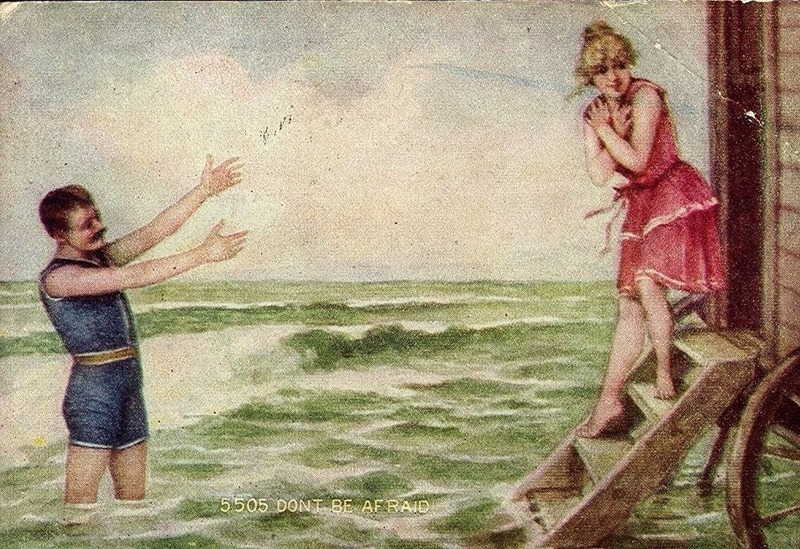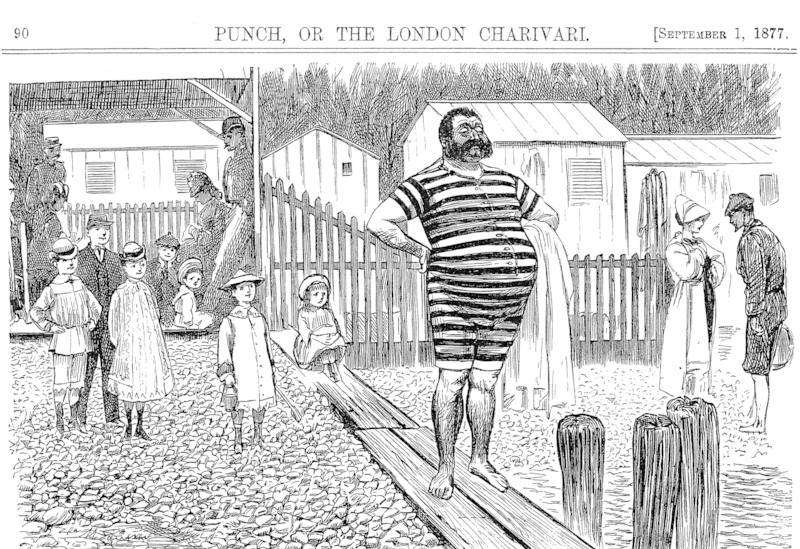Swimming, which was once called “bathing,” was an activity that was quite different in the 1700s compared to today. In the modern era, swimming with swimsuits where almost every part of the body is exposed is quite normal, but in the 1700s, it was important that everyone, especially the women, should cover all parts of their body while swimming due to several reasons. Here is brief background on what swimsuits look like in the 1700s and the reasons why they look that way.
Covered Bodies and Women’s Swimwear
Compared to today’s notion that swimming on the beach is a chance for most women to flaunt their fit bodies, the belief during the 1700s was that “bathing” is supposed to be an activity done with most parts of their bodies covered. The reason why swimsuits that fully cover the body were quite popular during the period is that dark skin, which often appears as a result of overexposure to the sun, was considered ugly or unattractive. So, women would opt to wear a swimsuit that covers most of their body to avoid getting dark skin.
Instead of a two-piece swimsuit that we are familiar with today, women in the 1700s would wear clothes that are known as a “bathing gown.” This bathing gown would usually have long sleeves and long skirts that would cover the arms and the legs, and the material used for this piece of clothing is either flannel or heavy wool as these fabrics prevent the dress from sticking to the wearer’s skin.
Now, you may be wondering, how does a bathing gown work if the water on the beach or any body of water would make the bottom part of the clothing float? The answer is that a bathing gown wouldn’t float up for two reasons. The first reason is that the materials used to make the dress is heavy enough for it to still stay at the bottom or at the center of the water, and the second reason is because the gown would typically have weights at the bottom of the skirt so that it wouldn’t float.
Popularity of Bathing Gowns
Almost all women would wear bathing gowns whenever they would go swimming in the early 1700s, but as most of us can imagine right now, swimming in those dresses that don’t provide much mobility and are quite heavy due to the weights would be uncomfortable. The bathing gown would eventually evolve to become lighter in the late 1700s, although they are still uncomfortable to wear compared to the modern-day bikini.
The swimsuits for women in the late 1700s feature a more fashionable appearance instead of being more utilitarian. The bathing gown would be layered on top of trousers for better coverage and movement for the wearer, while the weights on the skirt would be placed strategically in parts that would often float up in the water. Because of the limited movement provided by these bathing gowns, women would have a few activities that they can do in the water, and most of these activities require them to hold onto a rope tied to a buoy so that they wouldn’t drown.
These heavy bathing gowns would remain the popular type of swimwear for women until the mid-1800s, when shorter a two-piece swimsuit that is known as the Bloomer suit became more popular. The Bloomer suit was named after Amelia Bloomer, a social activist that aimed to change women’s clothing in the 1800s. Her work became successful, and the uncomfortable bathing gowns were eventually replaced with the lighter and more ergonomic Bloomer suits that have shorter sleeves on the arms and legs. The Bloomers suits would then become the precursor for future two-piece swimwear for women, including the bikini.
Men’s Swimwear
Men’s swimwear in the 1700s are almost the same as today, where the men are either wearing clothes that look like undergarments for swimming or are wearing sailor suits for better protection against the elements in the water. However, the difference between the 1700s swimsuit and today’s swimsuit is that the swimsuit for men in the 1700s are made of knitted wool or cotton, similar to the materials used for bathing gowns. Because men’s swimwear are made of heavier materials, it was actually difficult for men to swim while wearing it since it would absorb water faster and make them heavier.
Fortunately, much like women’s swimwear, men’s swimsuits evolved to be more ergonomic for better maneuverability in the water. Most swimsuits in the early 1800s are made of linen and other lighter materials to reduce their weight, which is often the main problem with swimwear in the 1700s. Sailor suits also became popular among men in the 1800s, and those were even adopted by women but with the name Bloomer suit, as mentioned previously.


